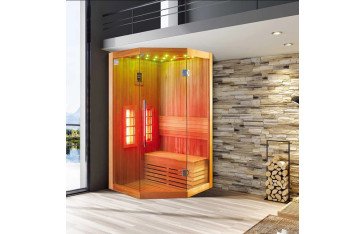- Détails de l'annonce
- Avis (0)
- 0 note
Wear in Injection Molds: To Float or Not to Float
One of the most difficult and challenging mold design issues is how to reduce or eliminate wear in injection molds. After all, the more wear that occurs, the higher the mold repair costs and/or the shorter the life of the mold. It’s a given that both the mold designer and the mold builder are committed to designing and building molds with the least wear, but it often seems to be an elusive target, especially with mold designs that have various actions taking place during the molding cycle.
The Wear Challenge
Mold designers and builders try to use the typical methods of minimizing wear—such as using differential metals; using low-wear coatings; specifying high metal hardness thus equating high hardness with low wear; designing shutoffs with high angles thus avoiding locking shutoff angles; and, many more concepts that their experience leads them to believe works best in specific applications. However, one design principle that is not well understood by mold designers and mold builders is wear caused by mold components that are under some load or stress during the molding cycle.
Mold designers and builders see the mold as it is built and especially during the mold assembly phase. Every attempt is made by them to assemble the mold components such that all inserts are fitted so the mold can be assembled by hand. In the better mold building shops, the use of hammers, pry bars and clamps is either strictly forbidden or the use is severely limited. Most molds then are assembled by hand with many of the mold components fitted with close tolerances but, by design, are not under a stress. On the bench then, the mold is in a Static condition.
The molder then sees the mold in a Dynamic condition. Components may be moved out of position due to a variety of molding conditions—such as being clamped up under tonnage; cams moving back and forth with the opening and closing of the mold; thermodynamic changes in the mold due to differential heating and cooling; and, stresses caused by injection pressures trying to move mold components out of position. Therefore, to the perceptive molder, a mold is alive or a dynamic device, not a static device during the molding process.
For years there has been a small group of molders and mold builders that recognize that molds are dynamic devices. They have recognized that this dynamic condition often has caused mold components to be forced out of a designed position. As forces are exerted on mold components, they move out of their desired position and may be forced against their mating components such that very high loads or stresses between these components occur. One of the more serious results of these stresses is high rates of mold wear. It is almost inevitable that increasing loads will increase the wear between these mold components.
Mold Alignment Approach
Molders who recognized that excessive wear was being caused by unanticipated stresses on the mold components began to use a variety of designs to address the problem. One of the most common was to utilize increasingly expensive mold alignment features—such as high cost straight line interlocks. The reasoning was that adding complex alignment features would not allow components to move regardless of the forces being exerted in the mold. Thus, instead of attacking the problem of movement, they continued to try to stop movement.
Wear Minimization Solution
The best solution to the problem of movement causing stress was very simple. If component A is forced against component B thus putting both components under stress, remove the stress. Removing the stress can be accomplished by a revolutionary principle and that is to incorporate designs that allow components to move in the mold.
Specifically, if component A moves due to stresses, allow component B to move with component A. If both move together, stress is reduced or eliminated—depending on the design concepts. Result: when stresses are eliminated, mold wear is substantially reduced.
Float Concept
This concept of allowing components to move or float flies in the face of the mold builder teachings. It is a concept that is foreign to their experience and teachings. The industry generally agrees that the one type of mold that has the most potential for wear is unscrewing molds (i.e., molds designed to make a part with an internal thread). Today, molders that have adopted this concept and incorporate this into their designs are building very successful molds and are seeing substantial savings in repair costs.
Molders that are having their molds built with copper alloys to take advantage of increased mold cooling discovered that copper alloys are easily damaged. When copper alloys are formulated to resist wear, thermal conductivity can be significantly reduced. Molders then were forced to choose between fast cycle times due to increased mold cooling or better wear resistance. Molders that are using copper alloys successfully in molds have learned that float mould components may be the most successful mold design concept to minimize wear. Floating mold components therefore allow the molder to have minimal wear and fast cycle times.
Carte de la localité
Consignes de sécurité
- Rencontrer le vendeur dans un lieu public
- Vérifiez l'article avant de l'acheter
- Payez seulement après avoir récupéré l'article







